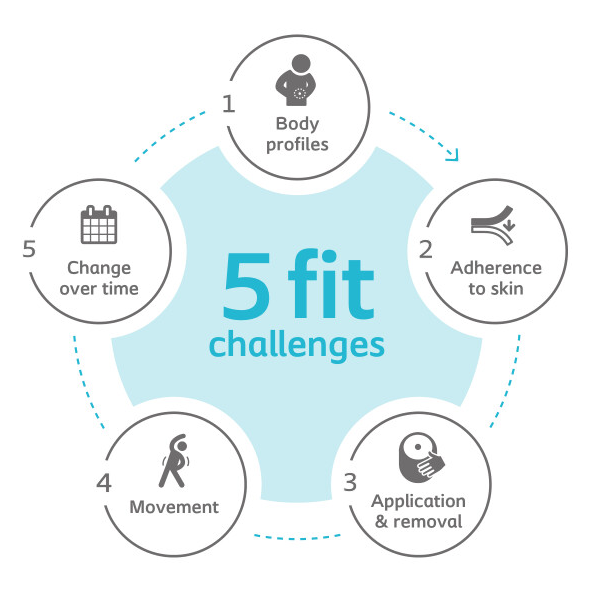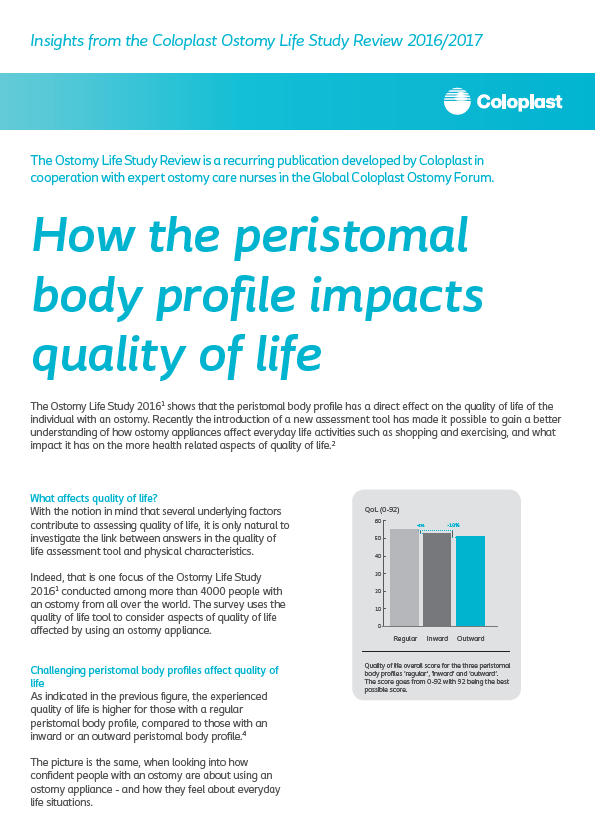
The fit is the difference
[theme is not complete yet]
The difference it makes cannot be over-emphasised. The right fit is the first step to giving patients security and it is the most critical prevention and treatment strategy. It is the key to avoiding the circle of leakage and skin issues. But securing the right fit isn’t easy. At Coloplast, we believe that there are 5 fit challenges to overcome for an appliance to fit right


Body Profiles
The shape of the peristomal area varies greatly from person to person. The Body Profile Terminology has been developed to enable assessment. It takes 648 distinct profiles into account and divides them into 3 categories: regular, inward and outward. This terminology and assessment have been recognised by the more than 2,000 stoma care nurses, from 27 countries, who in 2018 reached a global consensus on clinical practice guidelines for stoma care

Adherence to skin
The adhesive needs to make full contact with the skin surface to hold the appliance securely in place. This is a challenge because the skin surface can have dips, creases and folds. In addition, skin moisture can further compromise the adhesion of the baseplate.

Application and Removal
If the baseplate is not easy to apply and remove, then compliance to an effective change routine will be difficult. A poor application technique can increase the risk of leakage5 and difficulties in removing the baseplate can cause or worsen skin issues

Movement
The appliance has to fit securely and comfortably during movement. Three movements that put particular stress on the baseplate are bending, stretching, and rising from a lying position.

Change over time
Bodies change over time and this can compromise appliance fit. These changes can be due to exercise, aging, weight gain or loss, sickness or pregnancy.1 Many changes will require reassessment of appliance choice.
Learn more about body profiles
References
1. Rolstad, B. S. & Erwin-TothP. L. PeristomalSkin Complications: Prevention and Management. Ostomy Wound Manage. 2004;50(9):68-77.
2. Kruse T. M & Størling Z. M. Considering the benefits of a new stoma appliance: a clinical trial. British Journal of Nursing, 2015 (Stoma Supplement), Vol 24, No 22.
PM: xxxx-xxxx-xxxx

